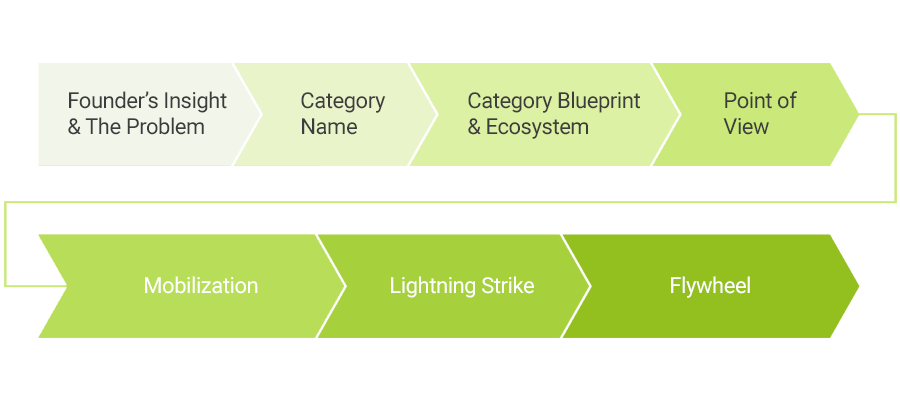Overview
We work with you to explore the problem you are solving today, and critically what you will be solving into the future. Using a proven process and methodology we drive an aligned, clear understanding by the management team around the problem definition today, and into the future. We define and design this new category, what it stands for, what problem it solves and what it feels for a consumer or a company to have the problem solved.

The Process
We work alongside you for the entire process, and from the problem clarity and category defined and named, we help you build the foundational components to make the category truly credible and “real”. You need to be able to show your “Blueprint” for your technology, innovation, and market leadership into the future. It is not only what your solution does today, but what will it solve into the future? This also means a clear category ecosystem map which shows the other technologies, API’s, service providers, government agencies, certifications, analysts…. and demonstrates the category extends beyond your own technology or service.

The Ecosystem
A Category cannot exist with only your company and solution. You also need a powerful and clear “map” that shows where your service, technology, platform fits into an overall market and ecosystem of adjacent, relevant players. It validates your Category and places you ready to build and articulate your point of view. Not the “elevator pitch” which is a condensed highlight, but the deeper story and narrative that really makes it “pop” when audiences hear it.

Go-to-Market Plan
At this point we are ready to roll! To execute effectively and cut through all the market noise, we help you to leverage your powerful, new Point of View, and build a Lightning Strike strategy and detailed plan. This will ensure that your Point of View and you are “heard’ in the marketplace when you launch or update the category you are designing and dominating. It’s a proven approach, and the Out-Position team has driven legendary Lightning Strikes in-house as well as working with clients.
And the overwhelming historical data shows that the company that defines the category is best positioned to dominate it. When then happens, on average, the Category King takes 76% of the overall market valuation.

